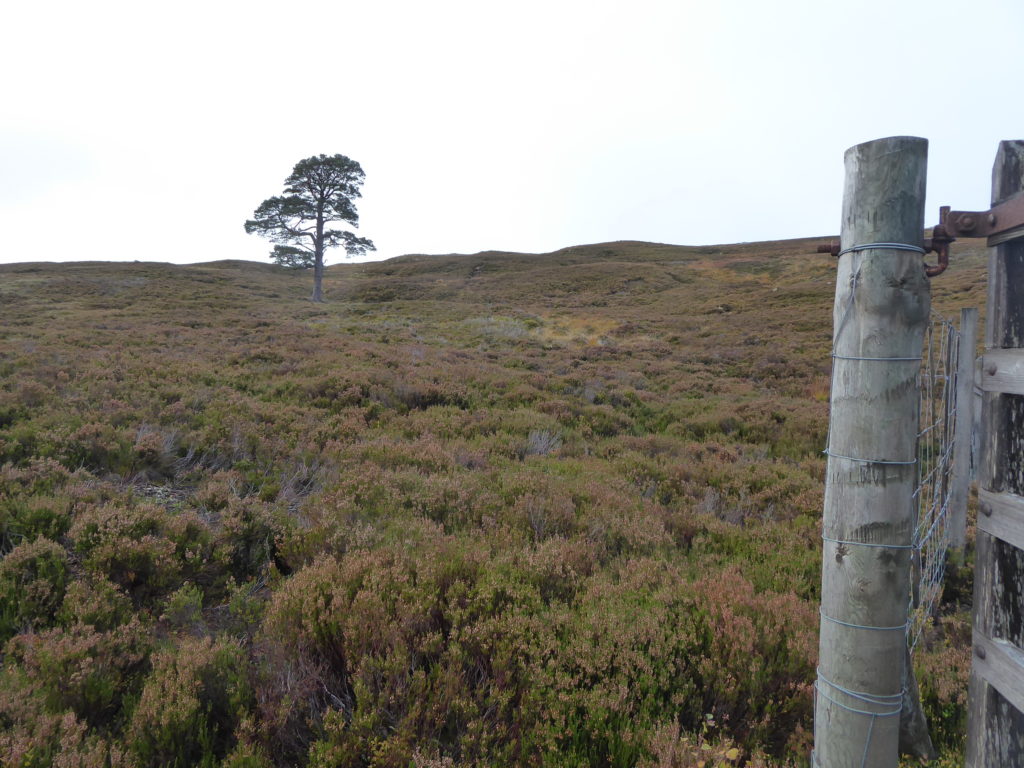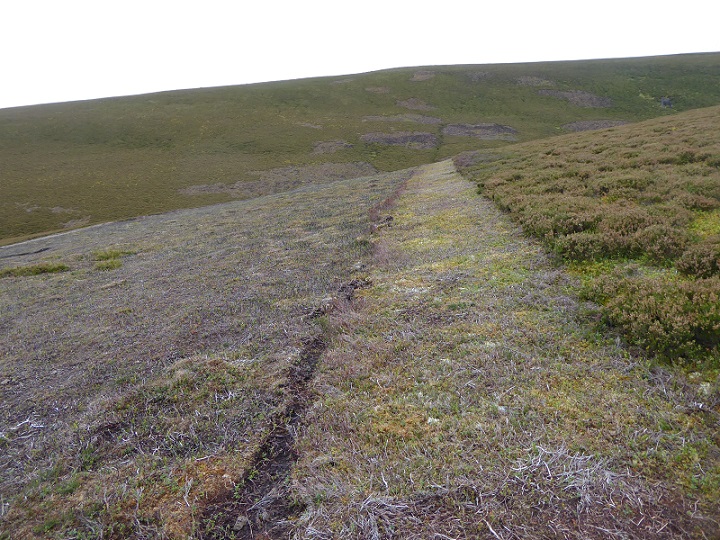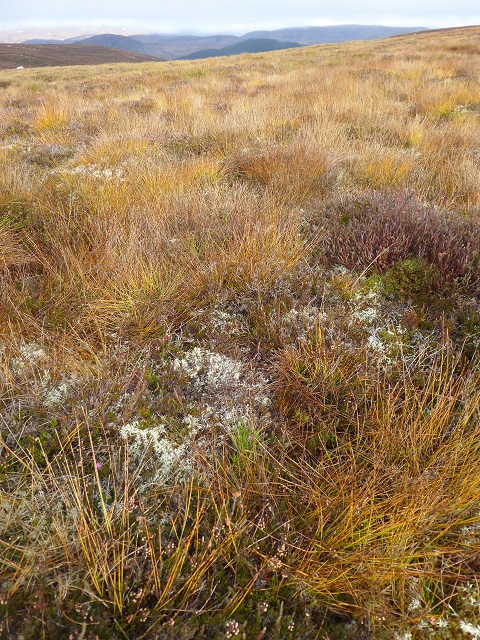
Today’s Herald on Sunday, in conjunction with the independent investigative journalists’ platform the Ferret, looks forward to next week’s COP 26 climate conference in Glasgow. 26 people were asked to contribute their views on a future vision for Scotland (see here). This is what I said:
“In the Scottish uplands overgrazing by red deer will be controlled so that our forest and mountain habitats regenerate. And, to achieve this, the Royal Family promise to make massive changes in land management at Balmoral and elsewhere.”
It is good that the Royal Family are playing a significant role in this conference and have been prominent in recent weeks in raising public awareness about it and the critical issues that all nations face in meeting the challenges of both climate change and biodiversity loss. As the owners of large tracts of land in the UK the Royal Family is in a special position. The management of their land should meet the highest standards, not only in the delivery of local benefit but also as an example to others, both in the UK and further afield. And this includes change in land use practice to meet tomorrow’s needs. This post takes a closer look at what further action we might expect from the Royal Family.
The Royal Family and the Cairngorms
In the uplands the focus of Royal Family interest is their Balmoral estate and nearby Deeside land in the Cairngorms National Park. Prime objectives of this royal land use are forestry, deer stalking and grouse shooting. Traditional management practices are followed, in common with most other privately owned estates in the Scottish Highlands. But there is now substantial public and political pressure for fundamental change in these practices in line with modern requirements for climate change mitigation and biodiversity recovery. This pressure is likely to lead to a re-appraisal of forestry priorities, with a re-direction of planting away from the hills, with their peaty soils, to more lowland areas where soil cultivation does not disturb organic content. In the hills the natural regeneration of native woodland remnants through better control of grazing will become more prominent.

Heather burning of moorlands is likely to be regulated much more closely so that the prime objective is wildfire control rather than the maximisation of grouse and other game bird populations. Overgrazing by deer is a serious problem in many parts of Scotland, preventing the natural regeneration of woodland and montane habitats as well as the erosion of soil and vegetation on steep slopes. The risk of winter starvation of deer exposed to severe weather in areas of limited food and shelter is a further concern. New legislation in Scotland is expected to deal with these various problems associated with deer and grouse management.
For the Royal Family there are particular challenges on Balmoral estate in respect of deer management. These have been documented in previous parkswatch posts (Balmoral And The Recommendations Of The Deer Working Group; Three New Year Resolutions For Prince Charles In The Cairngorms; Deer And The Cairngorms National Park; Dr Adam Watson, The Royal Family And The Balavil Road Decision; The Royal Family, Land Mis-Management And The Cairngorms National Park).
In early 2020 a report prepared for the Scottish Government identified a group of estates in the eastern part of the Cairngorms National Park where efforts to control red deer numbers had been particularly unsuccessful (The management of wild deer in Scotland: Deer Working Group report – gov.scot (www.gov.scot)). Nearly 20 years of various voluntary control schemes had failed to reduce deer numbers down to levels which permitted ecological recovery. Balmoral was one of the estates implicated in this failure.

Excessive deer numbers have been leaving montane habitats in poor condition and preventing ancient pinewood from naturally regenerating. These problems are expected to be subject to investigation by a Scottish Parliament committee, but the need to make substantial changes to the way that red deer are managed on Balmoral and its neighbouring estates has been obvious for many years.
The Royal Family and agricultural land
Former Chief Scientist at the UK Government’s Department for Environment, Food and Rural Affairs, Professor Sir Ian Boyd, said in 2020 that up to half of UK farmland will need to come out of intensive production in the near future to create woodland, restore wildlife habitats and replenish the carbon content of our soils (Convert half of UK farmland to nature, urges top scientist | Farming | The Guardian). Today Ian Boyd is co-chair of the First Minister’s Environment Council (see here). The Council’s main purpose is to advise the Scottish Government on international best practice and keep Scotland at the forefront of tackling the climate emergency and ecological decline. It will report to COP 26 in Glasgow next month
Far too much farmland is subject to repeated cultivation and application of artificial fertiliser and pesticides to the growing crops. The massive decline in wildflowers, birdlife, insects, mammals and fungi in our lowland countryside, along with damage to our soils, has to stop. The only way to achieve this at the necessary scale is to replace areas of intensive cultivation with habitats that are rich in wildlife and no longer subject to relentless artificial fertiliser and pesticide application. This principle needs to be applied to every farm and croft so that there is a clear distinction between the land used for the intensive raising of crops and animal produce and the nearby low intensity areas needed for environmental benefit.

And the most straightforward way to achieve this is through the expansion of field margins in all fields so that wildflowers, shrubs and trees can flourish, under different management regimes, to provide ecological benefit as well as opportunities for public access and enjoyment. Extensive networks of expanded margins will also allow for the establishment of ecological corridors that facilitate plant and animal dispersal and movement across the landscape.
Such a vision can be delivered very rapidly. Most farmers and crofters depend on public subsidy to support at least part of their operations. These financial incentives are now being completely redesigned as a result of the UK’s departure from the European Union and its consequential disengagement from the Common Agricultural Policy. The UK has had schemes to promote environmentally sensitive farming in place since the 1980s but covering only limited areas. Lessons need to be learnt from all these schemes so that each of the four UK nations can put in place regulatory and incentive frameworks which are appropriate for different farming systems so that, wherever land is farmed, large scale habitat recovery is a key part of farming operations, with expanded field margins a central part of that recovery.
The Royal Family, with its large holdings of agricultural land in England, is well placed to demonstrate how these changes in farming practice can be brought about. Expanded field margins can encompass a very wide range of objectives, from the conservation of arable weeds to meadow species protection, from new hedgerow establishment to expansion of existing hedgerows and areas of shrubs and trees, as well as tree planting for timber purposes. Ecological restoration on a landscape scale should be a prime objective of these royal land holdings, accompanied by thorough environmental and economic analysis so that policy makers can learn what are the best management options for these low intensity areas and what sort of regulations and financial incentives will be needed to deliver the best ecological outcomes across the whole of the UK.
Leading by example
Ecological restoration and nature based solutions will be a key component of the COP 26 negotiations. The Royal Family are in a unique position, able to provide leadership, experience and inspiration to governments from across the world while also, as major landowners in the UK, demonstrating what is actually needed in our uplands and lowlands. Overgrazing, deforestation and excessive burning is found in many mountain and hill areas of the world while intensive farming systems have destroyed huge areas of natural habitat and damaged so many river systems. Correcting these problems is an essential part of international efforts to combat the dangers of climate change. When giving their advice to world leaders the Royal Family should be able to point to the ways in which they have tackled these problems on their own land. Major changes are needed on that land, without delay. Ian Boyd and his colleagues on Scotland’s Environment Council can help the Royal Family in this work both in the UK and many other countries.

It’s good that pressure is put on the Royal Family to practice what they preach as, with regard to muirburn in particular, I think they’re hypocrites. I wrote to Prince Charles about this issue and he delegated the response to Balmoral Estate. I didn’t feel the reply answered my concerns satisfactorily so I sent a follow up letter to Charles. I received no reply to it.
All the big landowners should be leading by example and playing their part in these issues, hopefully it won’t be too little too late. It’ll be interesting to see what action the Royal estates take in the future
Great piece, Dave Morris. But I query the bit about: “Heather burning of moorlands is likely to be regulated much more closely so that the prime objective is wildfire control…” Is there really a valid argument for burning heather for “wildfire control” – and when did this become a problem on Scottish moorland? Real wildfire (lightning strikes etc.) is incredibly rare and I thought most fires are caused by muirburn getting out of control, accidental fire started by people on the hill (barbecues or fag ends etc. – also rare) – or very occasional deliberate arson? I don’t see how you can create “firebreaks” to combat any of those accidental fires – where would you put the firebreak? It’s not like forests in the south of France or parts of Australia and N America where there is frequent and somewhat predictable wildfire and you can in some cases do pre-emptive burns or create effective firebreaks to separate blocks of forest and help protect property and human life etc. In the recent big fires in NW England (arson I think?) the bits of moorland that did not burn were the bits that were NOT managed for driven grouse shooting (DGS) – they acted as firebreaks because they were much wetter as a result of NOT being burned and had healthy wet spaghnum moss in and under the heather. I thought the argument for ‘pre-emptive’ burning of heather moorland was another invented rationale for what is really just intensive management of moorland for DGS? (like saying intensive grouse moor management is done for “wader conservation” when the purpose is solely to increase red grouse numbers for shooting and the byproduct of obliterating all other small mammal and bird predators (that might predate red grouse) is that you can sometimes show very localised ‘increased’ breeding success of some waders too (depending on your starting baseline)). I also thought that the prediction for most of upland Scotland under climate change scenarios is for us to get wetter? So surely the best strategy for wildfire prevention or control (if needed) on moorland is to restore and rehabilitate healthy functioning, water-retaining heathland ecosystems – not burn them?
Thanks Nonie, I agree with all your points. The best scenario is no burning at all, but I suspect that landowner pressure on politicians will leave the door open to some burning or cutting of heather adjacent to plantation forestry or domestic properties, using the wildfire risk argument. Under a good regulation scheme that cutting or burning could be minimised and probably phased out altogether if it was shown to be of no particular value. The vast majority of the moorland would have no burning at all. Dave
Thanks very much for your reply, Dave. And yes, I’m sure you are right that some burning (or ideally cutting!) may remain for ‘valid’ reasons like protection of property. It’s the tendency for this then to get used as a spurious reason for what is being done purely for driven grouse moor management that is worrying (as well as destructive in every sense and releasing CO2 and methane etc. from burning). You wouldn’t do the burning the way it is done currently (for intensive grouse management) if the aim was fire prevention. (As you say, if the purpose is prevention of ‘wildfire’ – “The vast majority of the moorland would have no burning at all”). I remember being taught about muirburn at Aberdeen Uni. and how cleverly it was managed to be sustainable (and maybe in some sense it was before the massive intensification of grouse farming and increases in frequency and area of burning) – but no-one was checking the impacts on biodiversity, soils, GHG emissions etc. then. I also remember a debate about using fire as a ‘management tool’ in old growth native (Caledonian Pine) forest – to “mimic natural processes”. But I think that idea was quashed because the evidence for it being ‘natural’ was poor – or came from much larger expanses of Scandinavian forests where infrequent fires even over large areas probably allowed forests to regenerate naturally, given enough time. But the risk of setting fire to native forests (or adjacent moorland) was seen as far too great in Scotland when the areas are so reduced anyway from any ‘natural’ state. If needed cutting would seem to be the obvious answer (and create more and better green jobs)! The burning in Angus Glens earlier this year was horrific in terms of impacts on air quality for residents too.
Here’s what I would have said in response to COP26. 99% of respondents will be sporting dark shades and a white stick. They will hear talk of rainbows and butterflies. The other 1% will be there to attend to their $multi-trillion investments in emerging markets. Greta will be there to play the Court Fool and Jester and hog the MSM limelight. Billions will be suckered by the spectacle and the optics of one of the biggest shows and theatre on earth. And the West will Boo! China all week.
A couple of years later, but: excellent points by Nonie Coulthard. I live in Canada and agree completely, re: seasonal fires being unavoidable in some countries. (Though worse lately because of climate change.) Very bad for our peat bogs here as well. Native Canadians did controlled burns for thousands of years, but they knew what they were doing. There are still wolves around in some areas of Southern Canada, even in Quebec and Ontario, and I often wish they would be allowed to flourish and would naturally ‘deal’ with the issue of some species ‘over-grazing’. I’ve heard there is quite a rewilding movement in the U.K., but I suppose the Royal Family is too devoted/addicted to hunting to reintroduce any natural predators. Some UK farmers appear to be freaking out over beavers, last I heard. Too bad the new King won’t put the 50,0000 acres of Balmoral into conservation and make a national park out of it. Then wolves could legitimately form a part of the ecosystem there, once again.